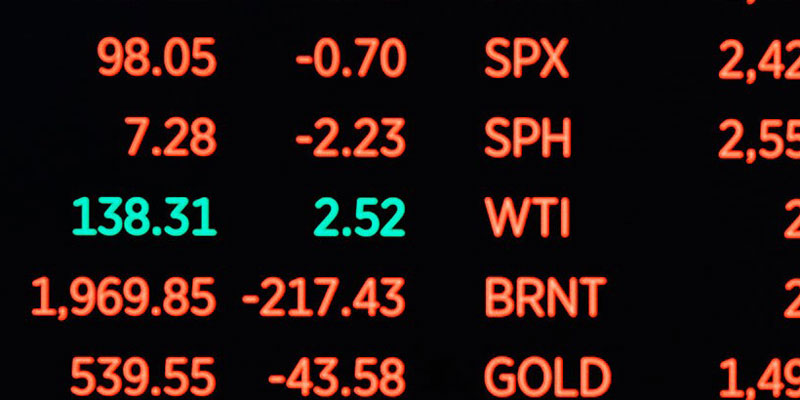A Beginner's Guide to Technical Analysis
Dec 02, 2023 By Triston Martin
Technical analysis uses market data to predict stock quotes and currency price changes. Technical analysts discover opportunities and make judgments using charts and statistical analysis, assuming previous price movements may predict future market behavior. This efficient market hypothesis-based strategy claims that historical price movements include all accessible information, helping investors explore financial markets.
Incorporating Technical Analysis into Trading Strategies
Trading relies on technical analysis, assuming price dynamics may forecast market moves. This strategy is valued by fundamental analysts as well as technical traders. Real traders use technical research to refine market entry locations after making primary considerations. These methods operate well together because technical analysis identifies low-risk entry points. Stock quote analysis improves trading methods and decision-making, providing a complete solution to financial market complexity.
Price Movement Across Time Frames

Technical traders use price charts to forecast market moves, considering time frames and technical indicators. Charts show one-minute, monthly, or annual time durations. Five-minute, 15-minute, hourly, 4-hour, and daily charts are studied. Intraday traders choose 5-minute or 15-minute charts, depending on their approach. Long-term traders who hold positions overnight use hourly, 4-hour, daily, or weekly charts.
Intra-day traders might profit from daily price variations within 15 minutes. The exact price change may not matter to long-term traders on a daily or weekly chart. Price activity, as seen by a daily silver chart, shows that a range from $16 to $18.50 over several months may entice a long-term investor looking to buy around the bottom. A recent increased downturn on an hourly chart of the same price action discourages an intra-day silver investor from joining the market based on short-term variations. This shows the need to consider multiple periods to match trading tactics to aims and preferences.
A Candlestick Chart
The most popular approach for tracking price fluctuations is candlestick charting, which shows market activity visually. Each candlestick represents an hour or four-hour price activity. A simple candlestick structure reveals market behavior. Candlesticks have three main parts:
- The highest point represents the peak price
- The lowest point represents the body
- Red or blue means the opening and closing prices.
An hourly candlestick indicates one hour of price activity, whereas a 4-hour candlestick represents four hours. Red candlestick bodies indicate closing prices lower than opening prices, while blue ones indicate the reverse. White and black or green and red are some color schemes dealers use.
Candlesticks' "wicks," or highest and lowest points, show price extremes. The candlestick's thicker body shows opening and closing values. Candlestick colors are random, yet they provide a rapid visual signal of whether prices close higher or lower. This simplicity helps quickly interpret market mood. Colors like white and black or green and red help explain pricing movements.
Candlestick charts provide analysts with more visual signals to stock quote example and patterns than bar charts, improving technical analysis. Market fluctuations may be quickly and thoroughly interpreted using this strategy, helping traders make speedy decisions. Candlestick charting helps traders navigate financial markets with precision and clarity.
Doji Candlestick Patterns
Candlestick patterns, created by one candlestick or two or three candlesticks, are popular technical indicators for market reversals and trend changes.
The appearance of Doji candlesticks, for example, reflects hesitancy in the market and may indicate a change in trend or reversal in the market. The starting and closing values of doji candlesticks are the same. Hence, they feature flat candlestick bodies instead of rounded ones. When the upper and lower "shadows" or "tails" of a doji candlestick are longer, there is a greater likelihood of market hesitancy and the possibility of reversal.
Most dojis are long-legged, with prices moving evenly in both directions and opening and shutting in the center of the price range. Candlesticks show market indecision. After a long uptrend or slump, a doji like this is sometimes seen as a market reversal. The dragonfly doji appearing after a protracted slump may indicate an uptrend. Considering the dragonfly doji's price behavior illustrates its reasoning. The dragonfly depicts sellers driving the price down (the long lower tail), but the price returns to close at its most significant position. The candlestick rejects the lengthy downside push.
The tombstone doji's name implies terrible news for purchasers. Unlike the dragonfly pattern, the tombstone doji rejects market price increases, suggesting a negative reversal. A rare four-price doji, when the market starts, closes, and trades at the same price, is the pinnacle of hesitation, a market that shows no sign of moving.
Technical Indicators

Technical stock quote analysis relies on moving averages to evaluate trends and make judgments. The dynamic method moves average crossings, especially with 10- and 50-period moving averages. When the shorter-term average exceeds the longer-term one, traders may purchase. This method detects short-term momentum shifts compared to the longer trend to detect trend reversals or accelerations.
The number of a moving average frequently determines its relevance. Moving averages over 100 or 200 periods are more important. These benchmarks are more robust indicators of market mood or trend direction. Crossovers and correlations with higher-period moving averages help traders pinpoint entry and exit positions, adding sophistication to their technical analysis toolset.
Daily pivot points, support, and resistance levels help traders initiate or exit deals, signaling breakouts.
These levels, calculated from the previous day's high, low, open, and close, are readily available and commonly used to impact prices. Fibonacci retracements at 23%, 38%, 62%, and 76% help find low-risk entry positions during corrective market retracements. From the retracement low, Fibonacci extensions predict profit goals of 126%, 138%, 162%, and 176%. Both indicators are commonly utilized to influence market activity and help traders decide.
Momentum Indicators
Momentum indicators like the Stochastic Oscillator, RSI, MACD, and ADX measure market strength rather than direction. These stock quotes tools assist investors in determining if market moves are trends or range-bound trading. Momentum indicators warn of trend reversals and deteriorating trends. Other signs point to a prolonged climb with declining velocity, which should encourage traders to consider taking some profits. When used with other technical analysis tools, momentum indicators help construct trading strategies more virtually.
-
 Investment Jan 29, 2024
Investment Jan 29, 2024AARP Life Insurance 2024: An Essential Review for Informed Decisions
AARP Life Insurance, offered by New York Life, provides senior-focused policies with no medical exam, flexible coverage options, and exclusive benefits for AARP members. Read more.
-
 Taxes Oct 05, 2024
Taxes Oct 05, 2024Understanding Form 1099-C: A Complete Guide to Cancellation of Debt
Learn how to properly file Form 1099-C and understand its tax implications, including important steps, exceptions, and how to handle multiple forms.
-
 Investment Nov 06, 2023
Investment Nov 06, 2023All About Blend Funds
Blend funds, also known as blended funds, are a specific type of equity mutual fund that invests in a combination of value and growth stocks. Investing in these funds gives you exposure to a wide range of these common investment strategies. There are various types of hybrid funds, and blend funds are one of them
-
 Banking Feb 12, 2024
Banking Feb 12, 2024How You Can Avoid a Credit Card Cash Advance
Credit card cash advances may seem like a good idea at the time, but they often end up costing the borrower far more than they anticipated. We've detailed several factors to keep in mind if you're thinking about receiving a cash advance in Canada, as well as some alternatives to think about
